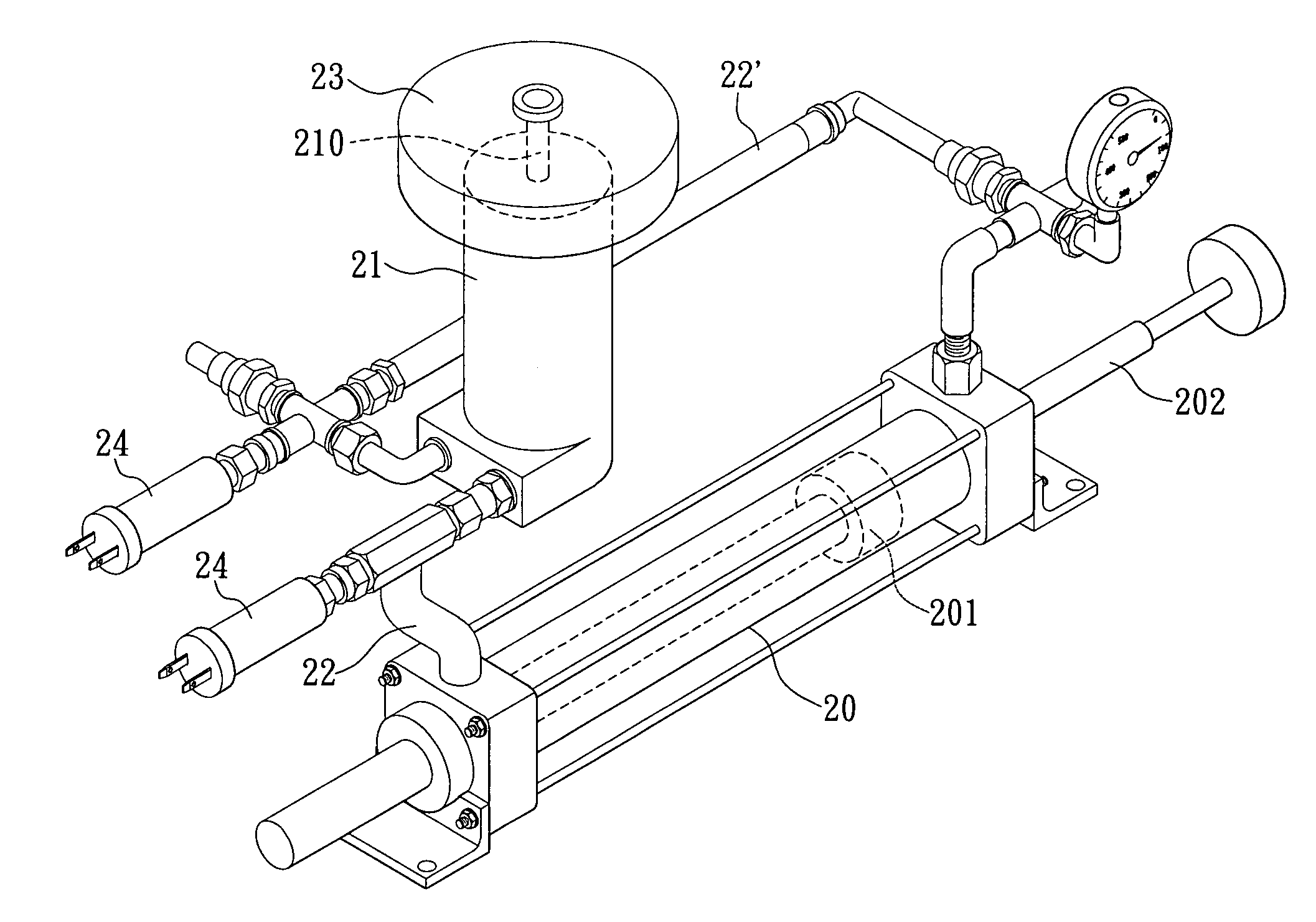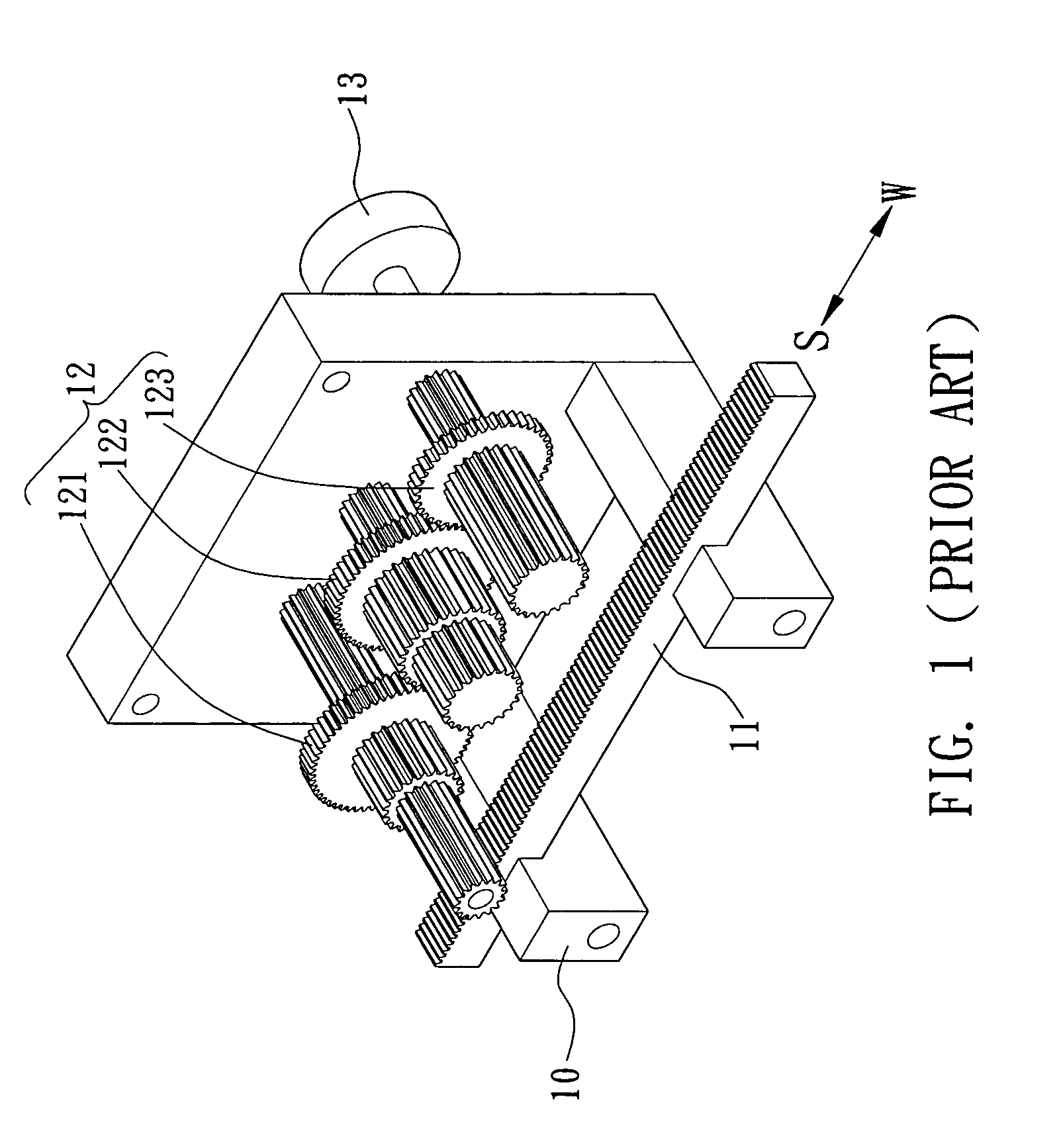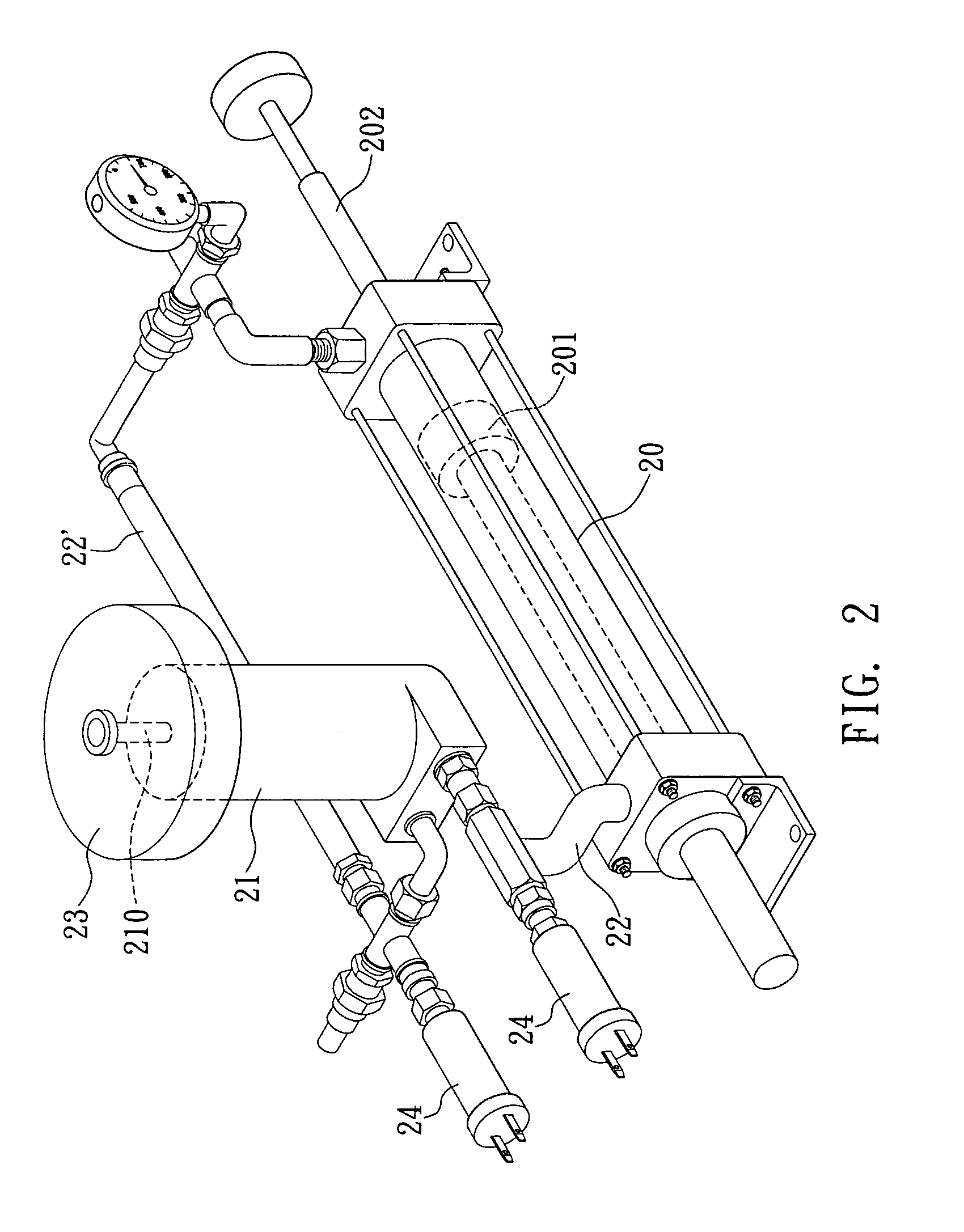Hydraulic inerter mechanism
a technology of inerter mechanism and mass element, which is applied in the direction of fluid coupling, clutch, coupling, etc., can solve the problems of limiting the freedom or flexibility of electro-mechanical system design, limiting the achievable performance of passive mechanical network, and reducing backlash problems, so as to reduce backlash and high external load , the effect of low cos
- Summary
- Abstract
- Description
- Claims
- Application Information
AI Technical Summary
Benefits of technology
Problems solved by technology
Method used
Image
Examples
first embodiment
[0026]Referring to FIGS. 2 and 3, the invention provides a hydraulic inerter mechanism, comprising a hydraulic cylinder 20, a hydraulic motor 21 and an inertia body 23. The hydraulic cylinder 20 includes a piston 201 disposed inside the cylinder and a piston rod 202 connected therewith and emerging externally, wherein the piston 201 divides the hydraulic cylinder 20 into two compartments 203 and 203′, in which each compartment has a respective joint openings 204. The hydraulic motor 21 includes an output shaft 210, an inlet 211 and an outlet 212, wherein the inlet 211 and the outlet 212 are connected to the joint openings 204 of the hydraulic cylinder 20 through pipe bodies 22 and 22′, respectively. The inertia body 23 is preferably a flywheel and disposed on the output shaft 210.
[0027]In addition, the hydraulic cylinder 20 and hydraulic motor 21 include working fluid therein, as well as manometers 24 connected to the pipe bodies 22 and 22′. The manometers are used to measure pressu...
second embodiment
[0034]Referring to FIG. 4, the embodiment differs from the first embodiment only in the connection between the output shaft 210 and the inertia body 23. The other parts of design of the hydraulic inerter mechanism, such as the hydraulic cylinder 20, the hydraulic motor 21, the pipe bodies 22 and 22′ and the manometers 24, are substantially or completely the same, and therefore the followings are descriptions of the differentiated features only.
[0035]As shown in FIG. 4, the inertia body 23 is disposed and fixed onto a gear box 40 with gear set therein (not shown in the figure). One end of the gear box 40 is externally connected to the inertia body 23, and the other end is externally connected to a drive gear 41. An initiative gear 42 is disposed and fixed onto the output shaft 210 of the hydraulic motor 21. The drive gear 41 and the initiative gear 42 are in mesh, thereby forming a mechanical connection between the output shaft 210 and the inertia body 23. When the hydraulic motor 21...
third embodiment
[0038]Referring to FIG. 5, the only difference between the embodiment and the first embodiment is the modification of the structure of the inertia body 23. The other parts of the design of hydraulic inerter mechanism, such as the hydraulic cylinder 20, the hydraulic motor 21, the pipe bodies 22 and 22′, and the manometers 24 are mostly or completely the same as in the first embodiment, and, therefore the following descriptions are of the differing features only.
[0039]As shown in FIG. 5, the inertia body 23 has at least a mass block 50 therein. The mass block 50 is used to adjust the moment of inertia of the inertia body 23 disposed and fixed onto the output shaft 210 of the hydraulic motor 21. When the hydraulic motor 21 drives the output shaft 210, it simultaneously drives the inertia body 23 to revolve. Therefore, by adding in at least a mass block 50 to adjust the moment of inertia of the inertia body 23, the inertance of the hydraulic inerter mechanism is adjusted accordingly.
[0...
PUM
 Login to View More
Login to View More Abstract
Description
Claims
Application Information
 Login to View More
Login to View More - R&D
- Intellectual Property
- Life Sciences
- Materials
- Tech Scout
- Unparalleled Data Quality
- Higher Quality Content
- 60% Fewer Hallucinations
Browse by: Latest US Patents, China's latest patents, Technical Efficacy Thesaurus, Application Domain, Technology Topic, Popular Technical Reports.
© 2025 PatSnap. All rights reserved.Legal|Privacy policy|Modern Slavery Act Transparency Statement|Sitemap|About US| Contact US: help@patsnap.com



